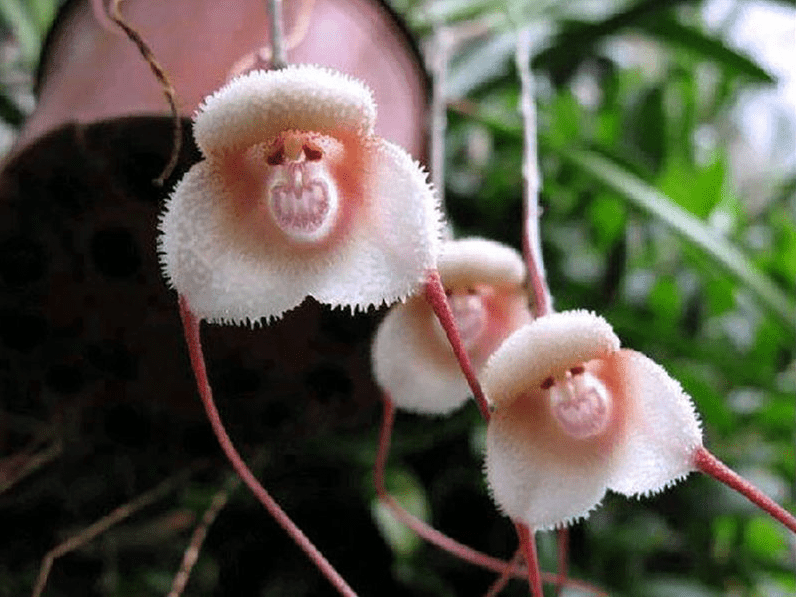Among thousands of orchid species around the world, one stands out as both fascinating and eerie the Dracula simia, better known as the Monkey Orchid.
This rare flower, native to the misty mountain forests of Ecuador and Peru, has captured global attention because of its blooms that strikingly resemble a monkey’s face.
Origin and Habitat
The Monkey Orchid grows naturally in the cloud forests of the Andes Mountains, at altitudes between 1,000 and 2,000 meters above sea level.
These forests are cool, humid, and constantly shrouded in mist a perfect environment for epiphytic orchids.
It thrives on mossy tree trunks and branches, absorbing moisture and nutrients from the air rather than the soil.
Unique Appearance
What makes Dracula simia truly remarkable is its flower shape.
The petals and lip form a distinct pattern resembling the face of a monkey, complete with “eyes,” a “nose,” and even a “mouth.”
Each flower can measure up to 5 cm across, and the long sepals create a bat-like outline, which explains the genus name Dracula, meaning “little dragon” in Latin.
Its color varies from pale orange to deep maroon, depending on the species and growing conditions.
Unlike many orchids, the Monkey Orchid blooms at various times throughout the year, giving it a long flowering season.
Fragrance and Pollination
Another surprising feature of the Monkey Orchid is its scent.
Unlike most orchids that produce floral or sweet fragrances, Dracula simia smells distinctly like ripe oranges or bananas.
This pleasant aroma helps attract fruit-loving pollinators such as small flies and bees in its natural habitat.
Symbolism and Popularity
The Monkey Orchid symbolizes curiosity, mystery, and natural wonder.
Its uncanny resemblance to a primate face has made it a viral sensation on social media, often referred to as “the flower that smiles back.”
Botanists and collectors value it for its rarity and its representation of how diverse and creative nature can be.

How to Grow the Monkey Orchid
Although beautiful, Dracula simia can be challenging to cultivate outside its native environment.
To grow it successfully, you need to replicate the cool, moist, and shaded conditions of a tropical mountain forest.
Ideal conditions include:
- Temperature: 12–22°C (55–72°F)
- Humidity: 70–100%
- Indirect light or shaded area
- Air circulation with constant moisture
- Mounting on moss or bark rather than potting in soil
These orchids do best in terrariums or greenhouses where humidity and temperature can be controlled.
Conservation Status
Due to deforestation and illegal plant collection, Dracula simia and related species face habitat loss.
Conservation efforts are underway in Ecuador and Peru to protect their natural ecosystems.
Supporting ethical orchid nurseries helps reduce the demand for wild harvesting.
Key Facts about the Monkey Orchid
| Feature | Description |
|---|---|
| Scientific Name | Dracula simia |
| Common Name | Monkey Orchid |
| Family | Orchidaceae |
| Native Habitat | Cloud forests of Ecuador and Peru |
| Altitude | 1,000 – 2,000 meters |
| Flower Size | Up to 5 cm |
| Blooming Season | Throughout the year |
| Fragrance | Smells like ripe oranges or bananas |
| Difficulty Level | Moderate to difficult (requires high humidity) |
| Conservation Status | Near threatened due to habitat loss |





